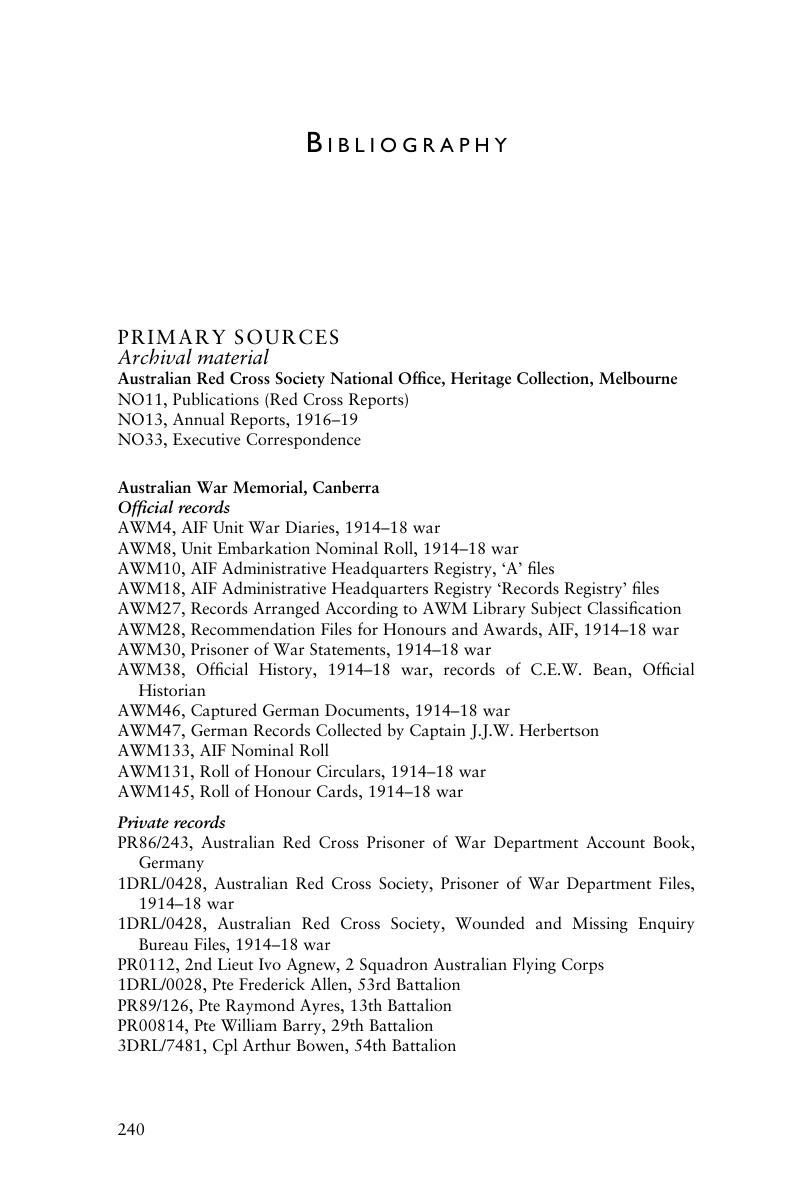Book contents
- Surviving the Great War
- Other titles in the Australian Army History Series
- Surviving the Great War
- Copyright page
- Contents
- Figures, maps and tables
- Preface
- Acknowledgements
- A note on casualty statistics
- Glossary
- Map
- Introduction
- Chapter 1 Raising the white flag
- Chapter 2 The reciprocity principle
- Chapter 3 Giving the game away
- Chapter 4 Saving lives
- Chapter 5 Challenging the Holzminden illusion
- Chapter 6 Well fed and plenty of freedom
- Chapter 7 Hun haunted?
- Conclusion
- Book part
- Notes
- Bibliography
- Index
- References
Bibliography
Published online by Cambridge University Press: 12 November 2019
- Surviving the Great War
- Other titles in the Australian Army History Series
- Surviving the Great War
- Copyright page
- Contents
- Figures, maps and tables
- Preface
- Acknowledgements
- A note on casualty statistics
- Glossary
- Map
- Introduction
- Chapter 1 Raising the white flag
- Chapter 2 The reciprocity principle
- Chapter 3 Giving the game away
- Chapter 4 Saving lives
- Chapter 5 Challenging the Holzminden illusion
- Chapter 6 Well fed and plenty of freedom
- Chapter 7 Hun haunted?
- Conclusion
- Book part
- Notes
- Bibliography
- Index
- References
Summary

- Type
- Chapter
- Information
- Surviving the Great WarAustralian Prisoners of War on the Western Front 1916–18, pp. 240 - 255Publisher: Cambridge University PressPrint publication year: 2019

